Epping has hit a “crisis point” as overdevelopment, traffic congestion and thousands of job losses take a massive toll on the community.
Residents say they are stuck in a “living nightmare” amid the surge of new unit blocks in their once-sleepy neighbourhoods.
Long-time Liberal Party supporter Llew Kennedy says the development drive, clogged roads and tree massacre in Epping are enough for her to change her vote at the state election on Saturday.
“This overdevelopment in Epping is just wrong; I can’t support the Liberals anymore,” the Rosebank Avenue resident said.
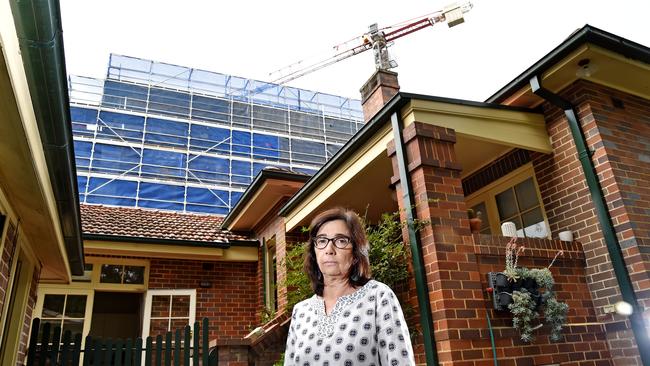
“It’s a living nightmare … and the sense of community has gone. And unfortunately, I believe the horse has bolted too far to get it back.”

The 58-year-old widow’s street sums up the planning mess in Epping, where medium-density housing is overtaking traditionally quiet neighbourhoods.
“We’ve gone from a safe, secure environment to the complete opposite,” she said.
In a special report by the Northern District Times, the suburb’s peak community group claims that the broader infrastructure planning for Epping was never properly considered by the Berejiklian Government.
“It has opened up Epping to more development and a population increase — and that’s all that’s happened,” said Janet McGarry, president of Epping Civic Trust.
“Epping used to have 10,000 people work in the suburb. It’s around 1000 now after Westpac and other big companies moved out, making way for thousands of extra units.

“We’re created a situation now where everyone’s going to be travelling to Macquarie Park for work, but there are massive (transport) pressure points being created by this.
“Epping is now at a crisis point after years of poor planning.”
Treasurer Dominic Perrottet, the Liberal candidate for Epping, conceded the suburb’s growth had been “more rapid than council or the State Government had anticipated”.
“And that’s brought frustration and disruption. I am a local — I get it,” said Mr Perrottet, who is running in his third seat in as many state elections.
It’s estimated that the future Epping town centre will deliver an increase in housing capacity of 3750 new dwellings. The suburb is expected to have an additional 10,000 residents over the next decade, with the population to hit 34,600.
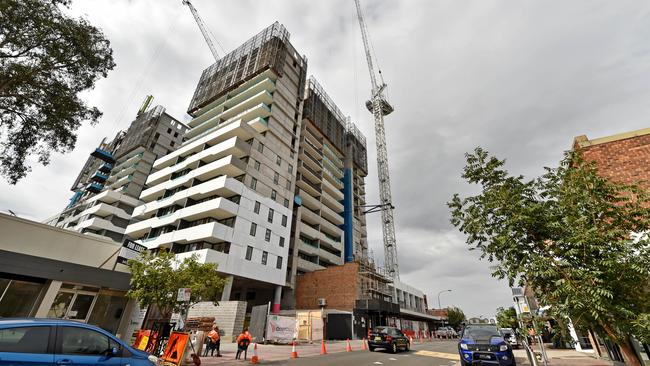
Developer Bruce Lyon said this was the most important time in the life of Epping.
“Up until the last four or five years, it’s been very static,” said Mr Lyon, who has lived in the area for the past six decades. “But while it’s good to see the progress, we have to get the overall planning right now, because there’ll be no second chances.”
Award-winning social researcher Mark McCrindle said residents faced a “steep adjustment curve” in the changing face of Epping.

“The northwest of Sydney is used to the gardens and green spaces — and now we’re getting massive density, particularly around train stations. This will take people some time to get accustomed to,” he said.
“The trick is just managing the growth and general renewal of suburbs like Epping.”
THE RESIDENT
The hammers and horns sound in unison at a string of nearby building sites.
It’s midmorning at Llew Kennedy’s once-sleepy street in Epping.
If you look to the right from her Rosebank Avenue house, built in the early 1930s, you can see leafy surrounds near two heritage-listed homes.
It appears to be quite tranquil, even though the street is clogged with cars.
But a glance to the left, towards Cliff Road, and it’s a hive of construction activity and chaos as her fence line, in what’s always been a low-density area, borders a surge in medium-density developments.
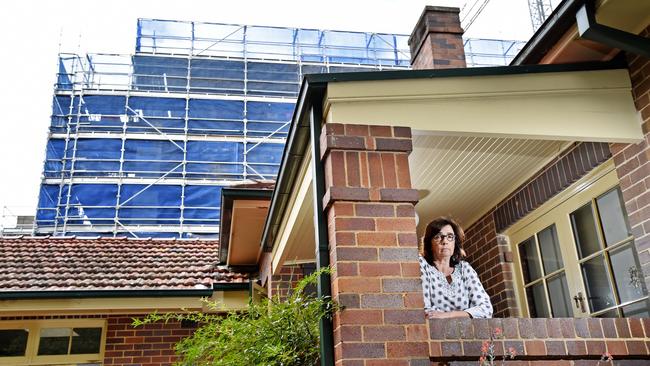
Welcome to the world of residents’ lives in this area of northwest Sydney, where a plethora of medium and high-density apartment blocks are being built in traditionally quiet neighbourhoods.
Residents claim that from dawn till after dusk (past permitted building times), the streets are filled with noise and dust.
For Mrs Kennedy, it’s a “living nightmare” — and enough for the long-time Liberal Party supporter to change her vote at the state election on March 23.
“This overdevelopment in Epping is just wrong,” said the 58-year-old mother of two, who moved to Rosebank Avenue with her late husband in 1986.
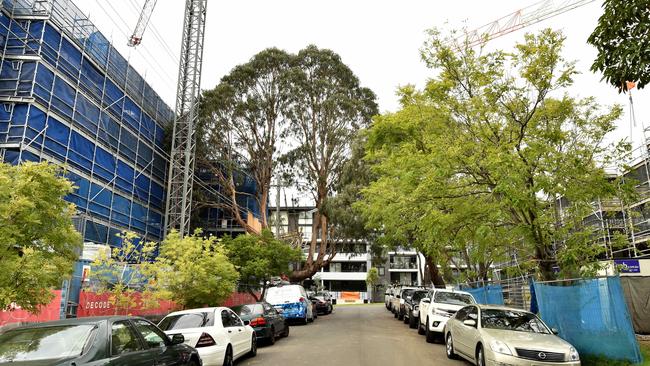
“I don’t feel safe … and you can’t do all the things you used to do with all this construction going on.
“I’m not angry at the workers; they are just doing their job. But it’s the planning system — the State Government — that has allowed it to happen through all the rezoning since the Liberals took over.
“We’ve gone from a safe, secure environment to the complete opposite in Epping.”
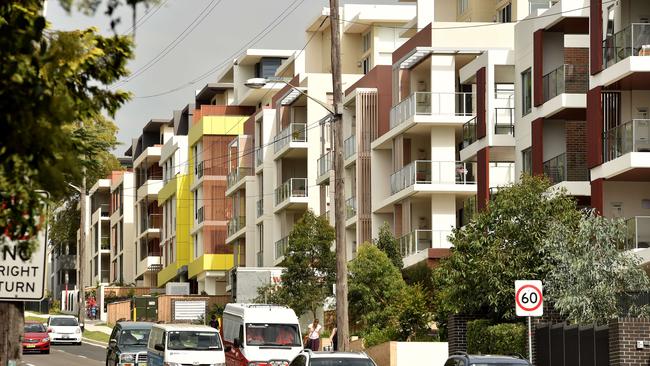
She claimed the State Government’s planning framework was crushing “a sense of community” in the development push, which went into overdrive at Epping when it was mostly under the control of Hornsby Council, before the amalgamation overhauls in 2016.
Between January 1, 2014 and May 12, 2016, there were 27 approvals for developments of five storeys and above in Epping.
And while Hornsby Council blames the State Government’s former Joint Regional Planning Panel — now Sydney North Planning Panel — for approving most of these DAs, it had earlier given a nod to many of them.
“The problem’s been that, whether it was at a council or ministerial level, no one was coming out here to see what they were signing off on,” Mrs Kennedy.
“They weren’t listening to the residents — and seeing for themselves the impacts of all these new units in our quiet area.
“I’d love all the politicians and planners who are making the decisions to come out here and experience all this noise and dust for a week. Let’s see how they like it.
“The sense of community has gone in Epping. And unfortunately, I believe the horse has bolted to get it back.”
THE DEVELOPER
Bruce Lyon is one of the most influential people in Epping.
The pioneer property developer, who has lived in the area for six decades, owns a whopping 7000sq m of land at key sites in the town centre.
He says this is the most important time in the life of Epping.
“I feel strongly that if we don’t get the planning right for Epping the first time, it’s too late,” the Lyon Group founder said.

“Parramatta Council, to their credit, is trying to get it right. But there are concerns with what some State Government departments are doing, especially with not allowing access off Beecroft Road.”
He believes taller mixed-use buildings — “with plenty of open space around them” — should be the template for town-centre developments.
It’s estimated that the future Epping town centre will deliver an increase in housing capacity of 3750 new dwellings.
“It’s been my strategy that we should be looking at 40 floors in this area — but having reasonable distances between the buildings,” Mr Lyon said.
“But along Carlingford and Cliff roads, instead of five storeys, they would have been better to go up to 10 floors and put more distance between the buildings, so you can create a ‘play environment’ within the extra development, instead of a heap of buildings in a row.
“If you look at what’s happening overseas, this is what they do: build higher up and use their land better for open spaces, so children have somewhere to play after school and on weekends.”
Mr Lyon plans to build two towers in the centre of Epping with a plaza that would allow people to walk between the railway station and Boronia Park.

The two towers, of 38 and 43 storeys, would be built at Beecroft Rd, opposite the station, and include about 700 residential units and shops on the lower floors.
The Epping Hotel, part of the site, would be demolished and replaced by a two-storey establishment.
One of the major developments under construction in the town centre is Cbus Property’s The Langston, near the library.
It will include three towers of 19, 25 and 29 storeys, containing 463 apartments and a mixed-use precinct with retail space.
“Mixed-use developments, where we get residential and retail together, are the way to go,” Mr Lyon said.
“We need to be encouraging more restaurants and vibrant outdoor entertainment venues to get a better social life for Epping residents.
“Up until the last four or five years, the suburb’s been very static. But while it’s good to see the progress, we have to get the overall planning right now, because there’ll be no second chances.”
THE GOVERNMENT
Dominic Perrottet concedes Epping has grown at a faster rate than his government had anticipated.
The Treasurer, the Liberal candidate for Epping, said he “understood” the overdevelopment concerns by residents.
“Growth has been more rapid than council or the State Government had anticipated, and that’s brought frustration and disruption. I am a local — I get it,” Mr Perrottet said.

When asked why the government had allowed the development explosion in Epping, he pinned the blame largely on Hornsby and Parramatta councils. Epping was in Hornsby Council’s LGA until May 2016, when the Baird Government announced its merger process and boundary changes.
The State Government last year introduced Independent Hearing and Assessment Panels (IHAPs) to make determinations on any development application worth between $5 million and $30 million.
“The large majority of planning rests with local councils,” he said. “Councils are still the decision-maker for all DAs under $5 million.
“We introduced IHAPs in response to allegations of serious corruption in some local councils.”
The father of five will be running in his third seat in as many state elections, after previously being elected as the MP in the seats of Castle Hill (2011) and Hawkesbury (2015).

The Times quizzed Mr Perrottet on why should Epping voters be confident he understands the important local issues.
“The Epping electorate is where I have lived for most of my life and where my wife Helen and I have chosen to raise our family,” he said.
“We face the same everyday challenges as the people of Epping and I am the only candidate that can deliver upgraded and new schools, transport and community infrastructure the Epping community needs.”
He said his main priorities for Epping, if elected on Saturday, would be to “fast-track the delivery of projects in the town centre” such as the widening of Epping Bridge, removing all demountables from Epping West Public and the delivery of a new primary school.
“I’ll make sure development in Epping meets our community’s expectations, supported by the right infrastructure, so there’s less pressure on our community,” Mr Perrottet said.
Labor’s candidate for Epping, Alan Mascarenhas, said that under the Coalition Government, Epping town centre had become “dilapidated” and “dysfunctional”.
“Residents are completely fed up. Many are moving out,” he claimed. “It can be 30 minutes to drive from one side of the station to the other. You’re taking your life in your hands just trying to get to Coles.
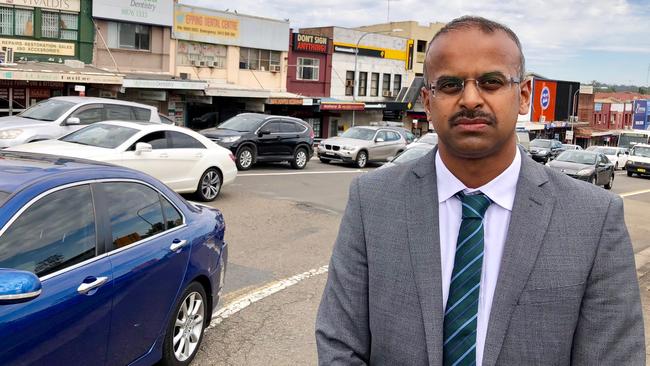
“The Station Link buses and three more massive towers going up at Langston Place are the final straw.
“As the MP, I’ll be listening, sleeves rolled up, and working with the community to fix the problems and restore pride.
“I say very strongly: the Liberals and the developers did this to Epping. And this time we need to vote for change.”
THE COUNCIL
Veteran Parramatta councillor Lorraine Wearne says the State Government has “never done enough to properly manage Epping”.
“All they did was drop these new planning instruments in that allowed developers to do what they like in the area,” the independent Epping ward councillor said.
“The community was never consulted and there was no individual work on suburbs across Sydney, including Epping, before these priority precincts were created.
“The government has just seen Epping as a development opportunity — and a dormitory around a train station.
“They never recognised people might want to do other things in Epping, other than just sleep and head off to work.”
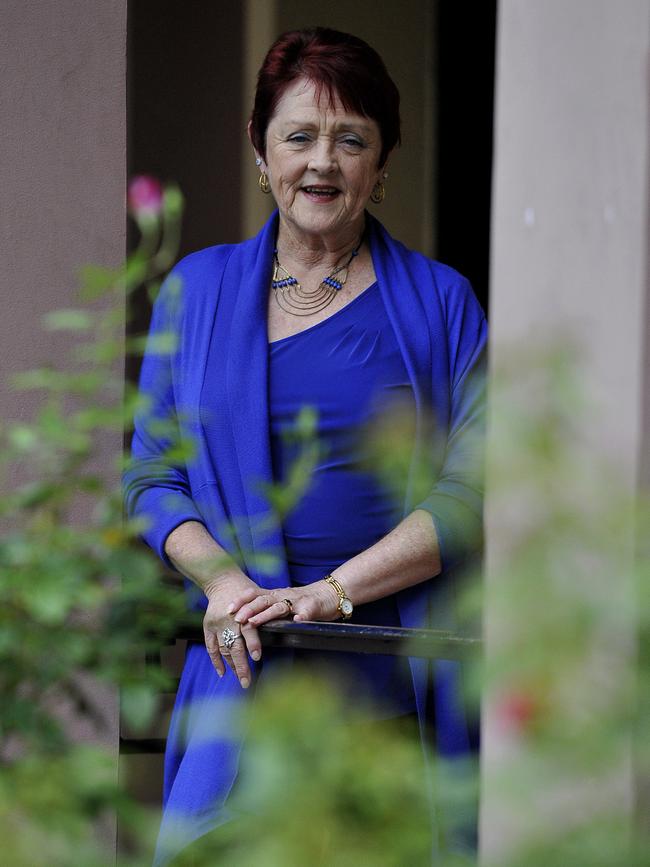
Cr Wearne said Parramatta Council had “very little opportunity to get it right” after the government’s planning policies had “got it so wrong”.
She said council was working hard to “save” Epping from rampant overdevelopment and daily traffic congestion.
“I’m hopeful that our council is doing enough to stop all the destruction of neighbourhoods that went on along Carlingford and Cliff roads, and to get better outcomes on the other side of the train line,” she said.
“The RMS (Roads and Maritime Service) has a lot to answer for in terms of how poorly they’ve managed traffic access points in Epping.
“And there is a sad lack of community space, and places for the community to do things. And that’s why the council has bought the Masonic centre.
“The government has never had a comprehensive plan for Epping. If you don’t get the planning right for things like recreational areas, then the rest of it won’t work.”
Approvals data shows both Hornsby and Parramatta councils, along with the State Government, have had a hand in driving up the number of dwellings in Epping.
A total of 45 development applications have been approved in Epping town centre by the State Government-appointed Parramatta Local Planning Panel and the Sydney Central Planning Panel since planning controls were changed in 2014.
Parramatta Council has approved 15 DAs for buildings of at least five storeys in Epping since amalgamation in May 2016. Hornsby Council signed off on 27 DAs for the equivalent building size in Epping between January 1, 2014 and May 12, 2016.
Parramatta Labor councillor Donna Davis said Epping had “reached its maximum for development”.

“The roads just cannot take any more traffic,” the Epping ward councillor said.
“We can’t do anything with the DAs that have already been approved, but in the land harmonisation process we are looking at what we can actually do to try to stem the tide of development.
“The council has lost its teeth on planning. We can say no to a plan for spot rezoning, but then the applicant can go to the Department of Planning and seek their approval instead. This is the back door that the State Government has created for developers.
“What’s clear to me is that the community is angry and they are not going to take all this overdevelopment any longer.”
COMMUNITY GROUP
Epping is now at a “crisis point” after “years of poor planning”, the suburb’s peak community group claims.
Janet McGarry, president of Epping Civic Trust (which has 500 members), said the suburb was a “case study of what not to do around planning”.
“The State Government has opened up Epping to more development and a population increase — and that’s all that’s happened. The broader planning hasn’t been considered around it,” she said.
“Parramatta Council, alone, cannot stop this overdevelopment. The State Government needs to call a (development) moratorium and do a proper masterplan for Epping.”
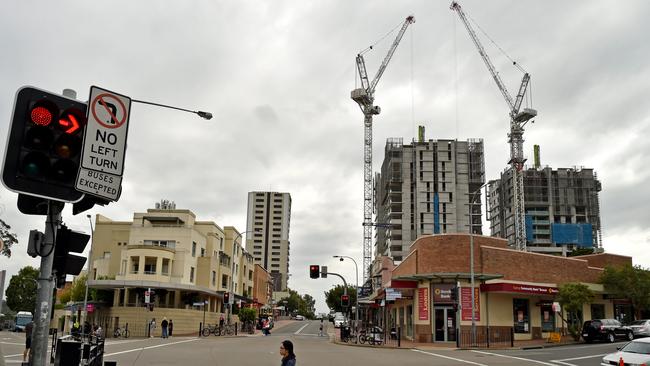
Ms McGarry said residents were calling for four key community projects to help revitalise Epping.
“We need a community facility on what is currently the council carpark site in Rawson Street,” she said. “Also, the library needs to be rebuilt and doubled in size; Dence Park needs a creative centre and open space for exercise and outdoor activities; and Forest Park, on the former bowling club site, needs to incorporate more open space with playgrounds.”
She cited figures which showed the dramatic decline of workers in Epping.
“Epping used to have 10,000 people work in the suburb. It gave the suburb a different feel and supported local businesses much better,” Ms McGarry said.
“It’s around 1000 now after Westpac (800 jobs) and other big companies moved out, making way for thousands of extra units. The zoning now will never encourage these companies to come back.
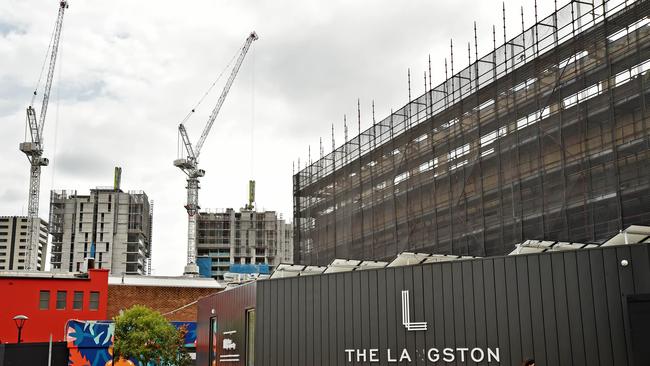
“Sadly, I think we will end up as a suburb with only small local businesses. We’re created a situation now where everyone’s going to be travelling to Macquarie Park for work, but there are massive pressure points being created by this.”
She said traffic congestion was another big problem in Epping.
“Studies show 87 per cent of traffic is through-traffic in Epping — and we need to be looking at long-term projects, including the better use of the M2, to clear up congestion from Epping Bridge,” she said.
“The council’s own reports show it could take 90 minutes from Carlingford Road to other side of Epping by 2025.”
In a final blunt message for the next Epping State MP, as well as councillors, she said: “There needs to be a vision for Epping which incorporates both sides of the train line.
“Epping is at a crisis point after years of poor planning. It’s a very difficult time for residents, and this needs to be recognised at all levels of government.”
THE RESEARCHER
A leading social researcher says growth in Sydney’s northwest has “overshot” the planning mark.
However, he sees enormous benefits in the population increase as long-time residents face a “steep adjustment curve” in their day-to-day lives.
Mark McCrindle, who works with large organisations to help them understand the external environment in which they operate, says “change cannot be stopped”.
“It’s the future, particularly in a city like Sydney which is growing at a rate of more than 100,000 people a year,” he told the Times on Friday.
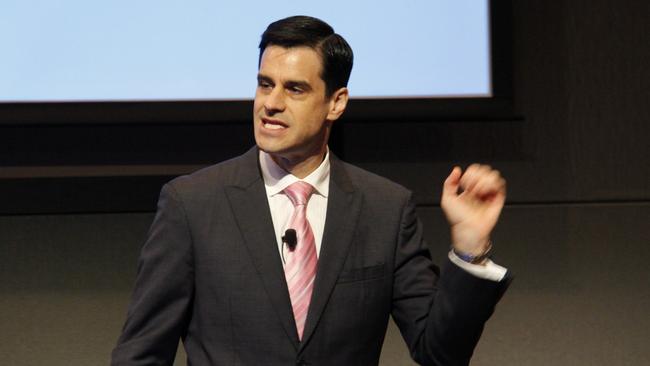
“We have 2.6 people on average per household, so we’re talking about the need for about 40,000 new homes that are required each year just to keep up with demand.
“Currently, 43 per cent of Sydneysiders live in apartments or townhouses — and this will increase to 50 per cent in the early 2030s.
“But getting the mix right is very important. In Asia, you’ve had many generations used to living in vertical communities. We haven’t had that same clustering in our cities, so we’re on a steep adjustment curve.
“And part of the challenge for us is that growth has overshot the planning.”
Population projections show that Sydney’s population will hit 5.7 million later this year. It’s estimated that figure will rise to 6.4 million people by 2036.
Epping is expected to have an additional 10,000 residents over the next decade, with the population to hit 34,600.

Mr McCrindle said Sydney’s northwest had the capacity to “soak up a lot of growth for now”.
“But there will be impacts on lifestyle if the infrastructure upgrades are a bit slow,” he added.
“Even though many residents are rusted on to their cars, we’re going to have to get used to catching the train.
“The northwest of Sydney is used to the gardens and green spaces — and now we’re getting massive density, particularly around train stations. This will take people some time to get accustomed to.”
He said population growth was a positive, because “it creates major economic benefits, through new infrastructure and other investments”.
“Sydney is a dynamic city; it’s changing and improving all the time,” Mr McCrindle said.
“The trick is just managing the growth and general renewal of suburbs like Epping.”

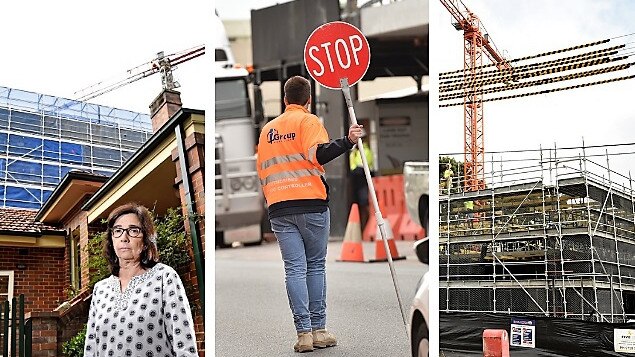
Add your comment to this story
To join the conversation, please log in. Don't have an account? Register
Join the conversation, you are commenting as Logout
Kyle Sandilands love nest sells
Kyle Sandilands’ former love nest with his ex, model and socialite Imogen Anthony, has just sold for more than $7.6m after a couple of years on and off the market.
Best of the best! Top 29 Aussie schools rugby sevens girls
They have speed, physical presence, silky skills and that special X factor. Australia’s top schoolgirl sevens players have been identified and the talent is extraordinary. TOP GUNS list